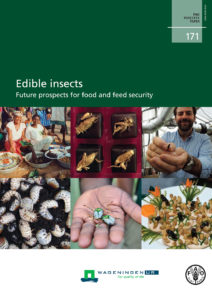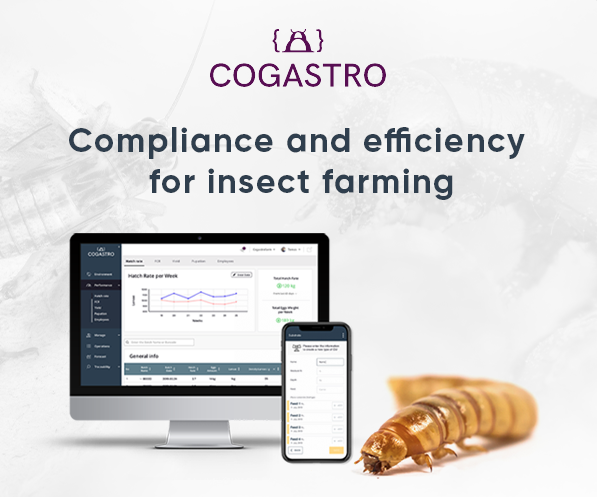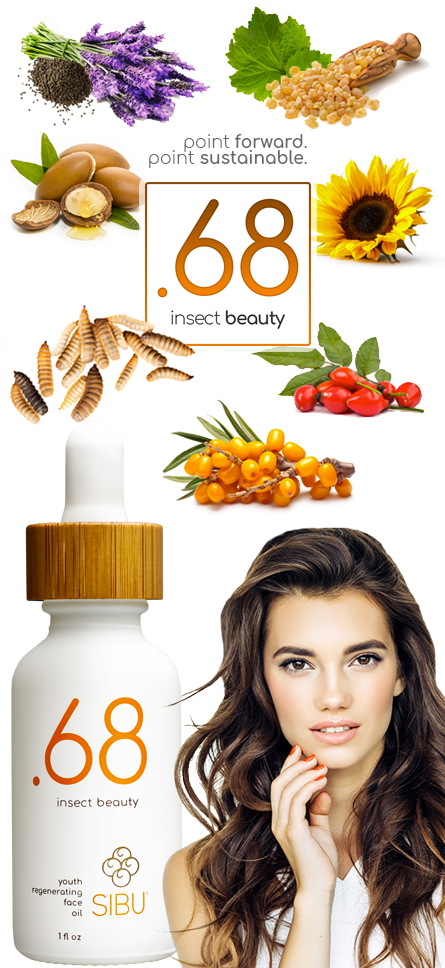This week there’s an alternative protein conference in San Francisco being put on by NewProtein.org and the International Alliance for Alternative Protein (IAAP). The location makes sense, as the bay area is the epicenter of innovation, arguably the leading one in the world in terms of investment capital and technological development.
However, there’s a slight problem with this alternative protein conference, because while it includes seemingly even the most obscure forms of plant or lab-grown proteins, it completely, and entirely, leaves out edible insects.
Why would anyone willingly ignore one of the most exciting, sustainable, healthy natural protein sources on the planet?
One which the United Nations FAO has identified as a leading potential solution for food shortage issues over the next 30 years?
One which received massive public interest, by far the most in the FAO’s history, to the tune of millions of downloads in the first few days after publication?
Insects, edible insects – a potential solution for Food and Feed. A very viable alternative protein.
“Nah, I’m good, FAO, you can keep your edible insect protein, Ima go only with whatever’s fully vegan, regardless of how healthy it is or what it costs consumers.”
This makes zero sense, unless, possibly, there’s some Baizuo at work here. Politics. Dogma. Western superiority.

Alternative proteins map January 2019 completely leaving off insect protein – NewProtein.org
2 billion people around the word eat insects on a regular basis. For nutrition, as a protein ‘alternative’ to meat or to plant protein, and just because people love insects and they’re local and nutritious. Healthy organic foods are starting to become popular as well, and plant-based diets and nutrition have long been standard practice.
As the middle class explodes with growth, people will either choose imported meats and seafood or – if available – they could have the choice of locally produced insect products.
What people in the west fail to realize, though, is that it’s utterly impractical to think the world can be 100% vegan. It’s also ironic, considering how culturally insensitive it is for westerners to be so judgmental as to suggest that everyone else around the planet must conform to their narrow set of dietary beliefs.
People in the developing world are by and large not eating commercially produced beef, poultry, or fish, at least not the kind produced in the way that turns stomachs for documentary viewers. That’s predominately just exported to western countries.
And 70% of soy which is being grown at the expense of the Amazon rainforest, goes to feed those cows, pigs, chickens, etc which are tortured and pumped full of hormones to grow quickly in order to end up on western dinner tables. This is understandably a big part of the 600% growth in vegans across the US the past 3 years.
People in the developing world, though, for the most part still grow their own food, or in urban areas, still eat locally produced foods. That’s a good thing, right? It’s good for the environment and good for the economic improvement of the farmers producing that food.
So in terms of environmental impact, replacing protein in the west with lab-grown or 3D printed alternative protein makes some sense. For the other few billion people on the planet, though, rejecting insects as a potential solution is elitist hubris – westerners expecting everyone else to conform to current western cultural beliefs, tastes, and standards, without regard for cultural history or actual environmental impact.
What’s more, if we look just at edible insects, as the FAO report mentioned and anyone who’s been in the developing world has seen firsthand, the impact of insect protein for combating malnutrition and for economic advancement is hugely beneficial.
To discount that, to ignore its existence, or worse, to lump it in with the dreaded “meat” label that consumers in the US and Europe are coming to (thankfully) disdain, is ridiculous because it is purposefully mislabeling something positive as a negative, in an attempt to discredit the benefit of insect protein!
This could be happening because A) it’s a competitive industry between and within many of the alt-protein segments (some of whom may be funding this conference and organization), and B) because of strict closed-minded dogma, which leads individuals to ignore the bigger picture positives that come from insect protein, because “insect = animal”.
As I always discuss with vegans and vegetarians willing to have an open-minded conversation in person, we have to look at the big picture here.
What are, in the big picture, the most beneficial solutions for the planet and humanity? It’s really hard to present a logical argument against insect nutrition being one of the top solutions. The only real argument is that they’re technically animals, and thus dogma wins out, ignoring the science which says that insects such as crickets aren’t sentient and don’t feel pain.
Despite the fact that vegans still eat bread and soy products, which kill billions of insects needlessly…but “we try the best we can”. Here’s a better idea, evolve what it means to be vegan, and create a better world by integrating insects into a vegan diet! Then you don’t need to feel like a complete hypocrite who “tries hard”, every time you have a bagel. Be an Entovegan – it just makes sense.
The bigger issue though that I personally have with some in the alt-protein industry apparently now deciding that insects shouldn’t be included, is the sheer arrogance of what that says about how they view non-western people groups. There really isn’t a better (worse) term for it than Baizuo, at its core.
The idea that insects – “eww, yucky!” – could be a solution for the western world, must be such an affront to Eurocentricism, that petty excuses are being made to reject it outright (“but I care about the bugs…”), without even being willing to look at why it’s been a staple in the diets of people groups around the world for the entirety of human history.
The idea that the developing world could deliver a solution to the planet – and in particular to the west – a solution which for several hundred years western agrarian societies have sought to exterminate, is such a twist in the who-saves-the-world-through-climate-change-solutions plot that it’s easier to just demonize it, than it is to be open-minded and look at why the UN suggested it in the first place.
I’m also not suggesting that the UN is the final word of authority on anything – merely that there were many years of in-depth research and study related to the potential solution of Insects as Food and Feed, and that the rationale behind their findings came with an open mind for solutions that are sustainable, nutritious, and provided economic benefit to the developing world. Along with companies in the west, of course.
One simple fact that westerners seem to completely overlook though when hashtagging 2050 food solutions is that those additional 2.something billion people who are going to be born the next 30 years, the vast majority will be born in the developing world!
Birth rates in America and Europe are declining, while the growth of the middle class is exploding in places like Asia, Africa, and Latin America, combined with a youthful, quickly innovating population. Especially in Asia and Africa.
So the idea that the solution to a host of real problems related to the food industry and protein in particular must only come from the west is quite presumptuous, because the developing world is where the growth is taking place and where the needs will be much larger for infrastructure, production, and feeding burgeoning populations. And ideally, meeting those needs with healthy foods that are culturally relevant.
That there are so many companies working on alternative proteins is incredible. I use and support those products whenever possible, and have for years. My frustration is not with any of the alternative proteins at all – it’s with those speaking on behalf of the ‘alternative protein industry’ and outright rejecting insect protein based on their own personal worldview, not on data or science.
As the seemingly public mouthpiece for an industry, NewProtein.org and the IAAP have a hefty responsibility to remain neutral and inform the public of the reality which exists, not paint a picture of only what they believe should exist.
This is an issue of facts and integrity, plain and simple.
Insects are absolutely an alternative protein solution for sustainable food production, nutritious and healthy food, and food which billions of people across cultures already are consuming and will continue to eat in large quantities as populations swell over the next several decades.
I would encourage those involved with the IAAP and the alternative protein conference to take a deeper look over the next few months, with an open mind clear of personal interference, and to include insect protein in its logical place in the next iterations of the alternative protein map and conference.
Insect protein is growing rapidly and can compete with any other alternative protein that you want to pit it against head to head in the areas of sustainability, nutrition, and accessibility for consumers globally.
To reject it outright is to reject a clearly viable solution for a greener planet and healthier humans.

Interested in learning more about edible insects? Check out the new project I produced for Entovegan, called Love #EatBugs – it’s a beautiful positive re-framing of how bugs are viewed both as insects and insect nutrition. Love your planet, love your body, love your food. Eat Bugs!





